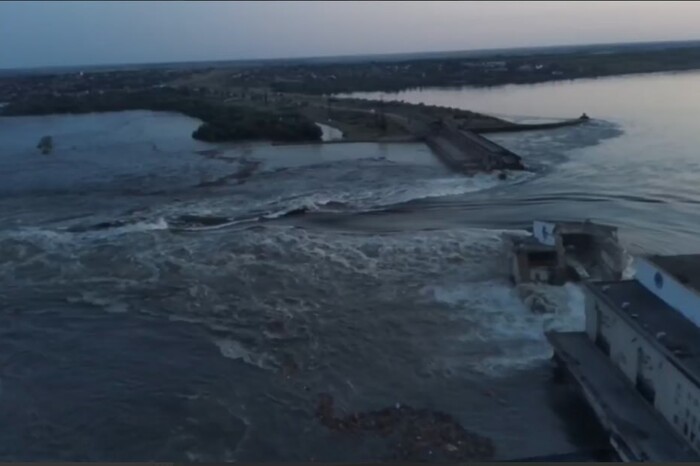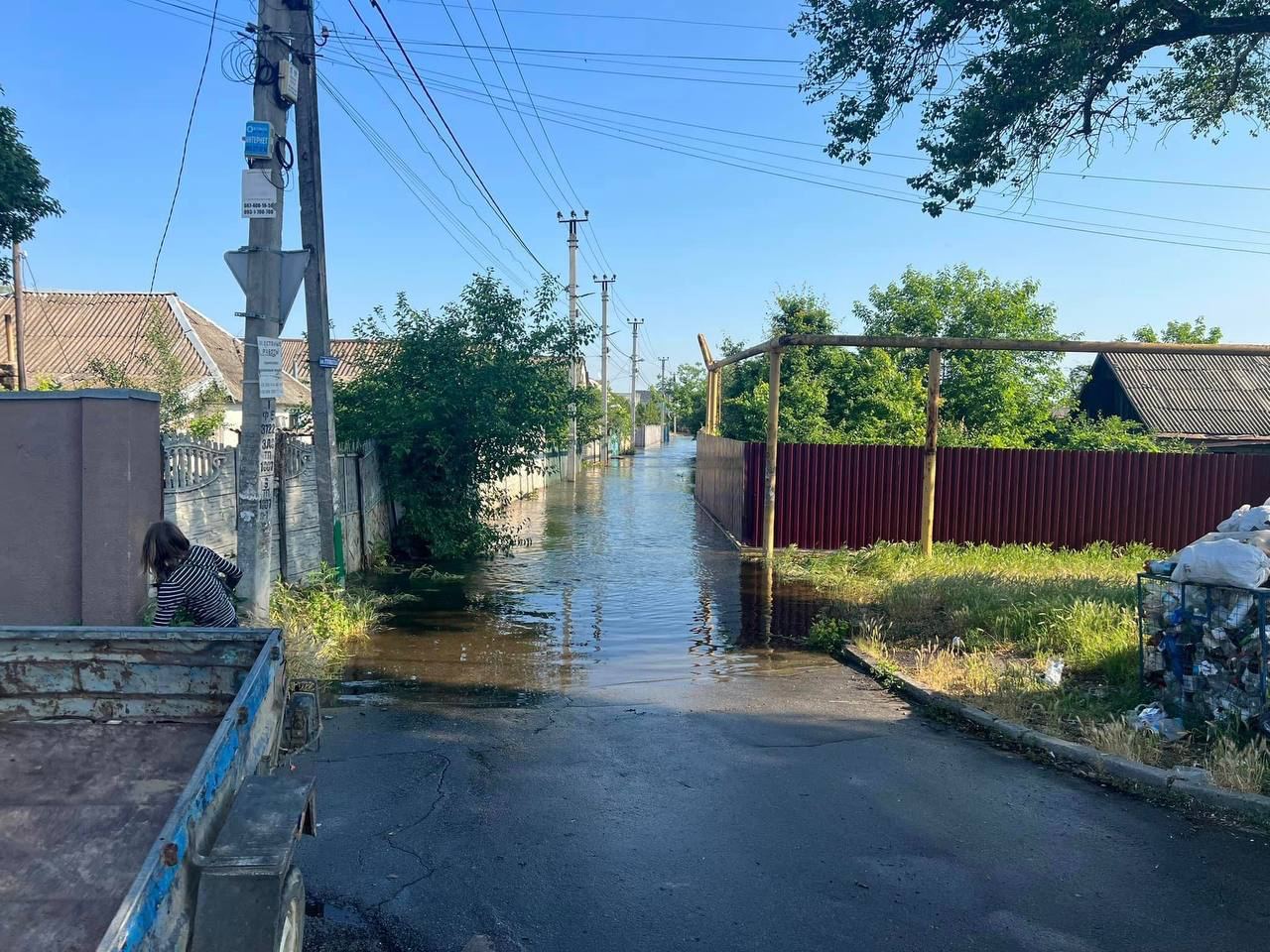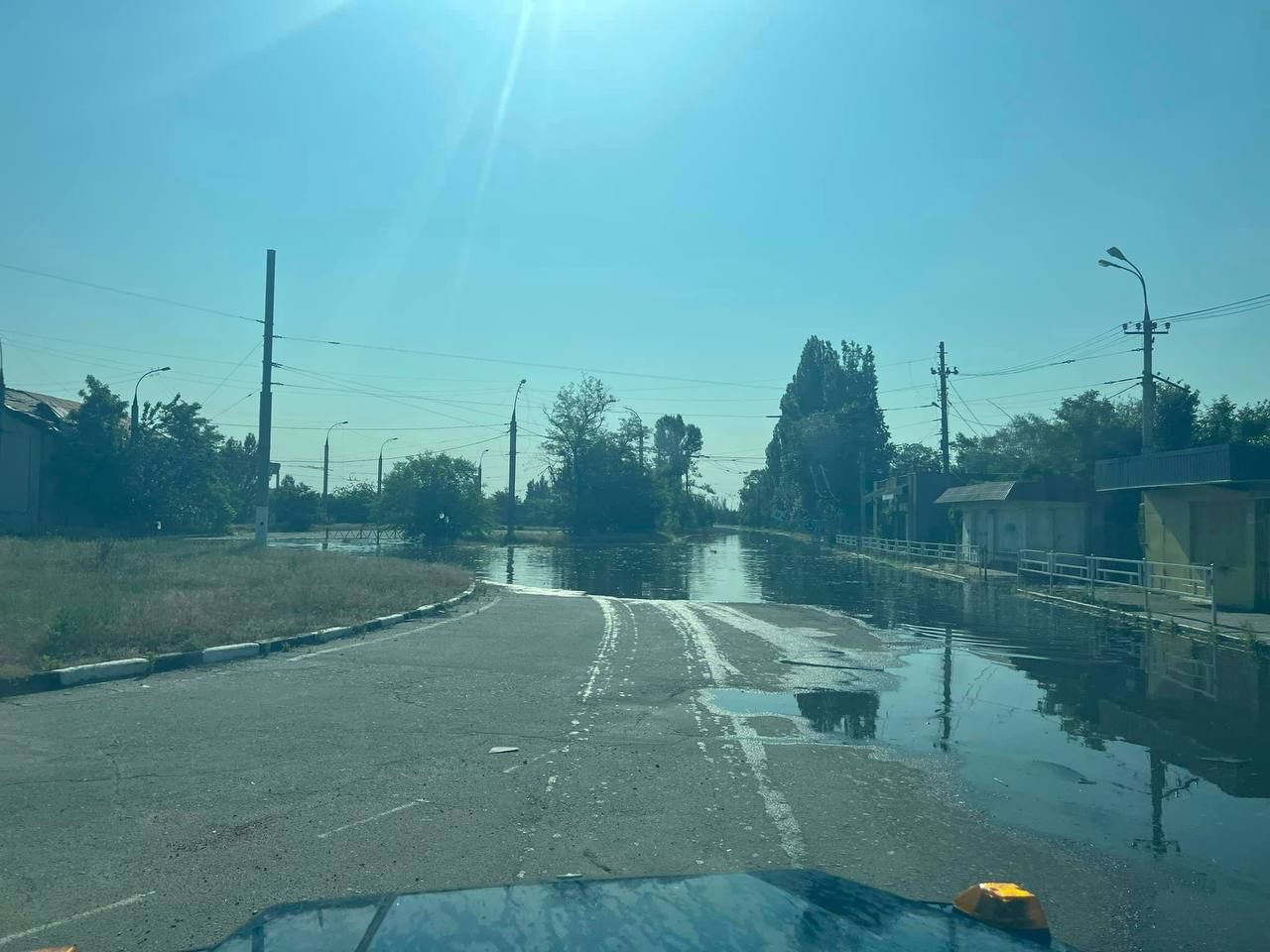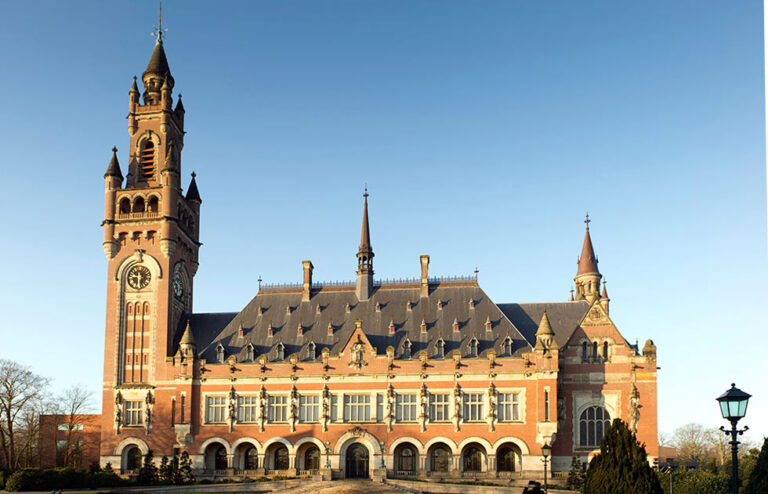
The blown up Nova Kakhovka Dam in Ukraine. Photo Source: Official Website of Ukraine


By Deepak Parvatiyar and Venkatesh Raghavan
Who blew up the Nova Kakhovka dam in Ukraine? The 30 yards high and about 100 yards wide dam, which was built in 1956 as part of the Kakhovka Hydroelectric Power Plant, sits astride Ukraine’s Dnieper River.
The dam burst on June 6, 2023, has led to a significant rise in the water level downstream of the Dnieper River. Entire neighbourhoods were flooded and more than 80 settlements, including parts of Kherson, are at risk of flooding. About 16,000 people were in the critical zone due to the destruction of the dam, Oleksandr Prokudin, the Head of the Kherson Regional Military Administration, stated.

Both Russia and Ukraine were quick to point their fingers at one another. Both warring countries, while blaming each other, went on to call it a terrorist act directed against purely civilian infrastructure.
“The Kyiv regime not only launched mass artillery attacks against the Kakhovka Hydroelectric Power Plant but also deliberately brought the water level in the Kakhovka reservoir to a critical level by opening the Dneprovsky Hydroelectric Power Plant’s floodgates,” the Russian foreign office stated. It said the Russian side will initiate a discussion for considering this crime by the Kyiv regime in the UN Security Council, the statutory and decision-making bodies of the OSCE and other international organisations.
However, pointing an accusing finger at Moscow, Kyiv said by blowing up the dam situated near the city of Kherson, Russia also endangered Europe’s largest nuclear power plant, the Zaporizhzhia Nuclear Power Plant. The dam holds about 18 million cubic meters of water, and Ukraine’s foreign ministry claimed, “The results of this terrorist attack can be devastating”.
In Vienna, the Director-General of the International Atomic Energy Agency,Rafael Mariano Grossi, also assessed the emerging situation following the destruction of the dam and assured that though the water level in the reservoir that supplies Ukraine’s Zaporizhzhya Nuclear Power Plant (ZNPP) was falling throughout the day, “there is no short-term risk to nuclear safety and security”.
It is interesting to note that in December 2022, The Washington Post reported that the Ukrainians were actually firing HIMAR missiles into this dam as part of a potential strategy to flood the region so that Russia could not advance.

Responding to a query on this aspect, the US State Department principal deputy spokesperson Vedant Patel said, “I don’t have anything to offer on that”.
Significantly, the United States has so far not directly blamed the Russians for the dam explosion. “We can’t say conclusively what happened at this point, but we will share more information when we can,” Patel said.
“We’ve seen the reports that Russia was responsible for the explosion at the dam, which, I would remind, Russian forces took over illegally last year and have been occupying since then. We’re doing the best we can to assess those reports. And we are working with the Ukrainians to gather more information. But we cannot say conclusively what happened at this point,” Admiral John Kirby, Coordinator for Strategic Communications at the National Security Council in the White House, told reporters in Washington.

As the strategic blame game continues, the geopolitical strategists and observers are busy analysing who stands to gain more from this man-made disaster. Months before the destruction, both sides, Moscow and Kyiv had sounded a cautionary note on the probable sabotage bid that can be inflicted by bursting the dam. As devastation struck nearly two days after Ukraine’s counteroffensive against Russia was launched, both the Western allies and the Ukrainian government seek to debunk any chances of it being a coincidence.
The battle arena set against the backdrop of the Dnieper River in the Kherson region witnessed a pushback or retreat of Russian troops nearly seven months ago. Ukrainian troops had managed to drive out the Russian troops and gain control of the Kherson region’s capital.
Geopolitical experts from the West pronounced that this move is ordained to benefit Russia in a big way. After the retreat of the Russian troops from the western side of the river, the dam had turned into a vulnerable spot that will help Russia score with its military might, the observer added.
Southern Ukraine being flooded with heavy torrents of water is now facing a double whammy. Villages are in the process of being swept away and even worse, the Ukrainian troops will find themselves unable to cross the Dnieper River. The man-made disaster has also taken its toll in the form of a very high-level environmental crisis.
As already mentioned above, the dam and its surrounding regions are under the control of the Russian military. The analysts also inferred that with the breaking down of the dam and flooding of the neighbouring reservoir that was already filled to the brim owing to rain and snowfall, a huge tract across the breadth of the conflict area gets naturally cordoned off and it works out to benefit Russia. It will help Russia focus its troop movements on a much-reduced area, they added.
The breaking of the dam has rendered the crossing over of the Dnieper River an insurmountable task for the Ukrainian troops. Kyiv and the Western allies view it as a bid by Moscow to create obstacles for the Ukrainian forces in their bid to launch a counteroffensive.
Though on the official front, the US has so far not taken any stance on who is to be blamed, Western intelligence gathering officials strongly felt that Russia was behind the disaster. Admiral Kirby said that this would have significant repercussions for Ukraine’s energy security and that this could be Russia’s weaponization of energy strategy.
Russian authorities, however, point out that Kyiv was using diversionary tactics to deflect from the focus on their counteroffensive, also adding the sabotage will work out in favour of Kyiv deploying an increased troop presence in a reduced military space.
Observers from the Russian military blogged that the bursting of the dam works out in favour of the Ukrainian defence lines. The line of thought they expressed spelt out that it caused maximum suffering to the territories controlled by the Russian troops, including extensive damage to its mine barriers besides front-line positions.
Neutral observers say that the reasons given are not strong enough a motive for Ukrainians to commit the act of sabotage, but concede that the bursting of the dam would adversely affect the Russian build-up on their defence lines over several months.
Subsequently, a geopolitical observer summed it up stating, “Both sides stand to lose something”.
So finally how big of a deal was this if this were a deliberate act of sabotage? The US said the important thing to remember, though, was that it was in fact Russia that started this war. It was Russia that was occupying this area, and it was Russia that was in control of the dam. “So we continue to be in touch with Ukrainian authorities, and how we may be able to offer assistance to the many Ukrainians who have been displaced and forced to flee,” Patel said.





